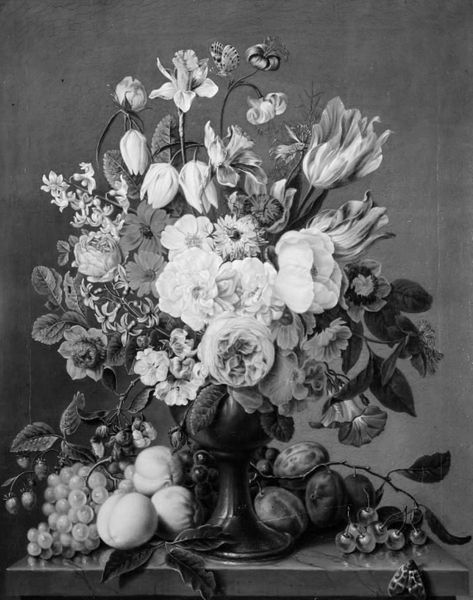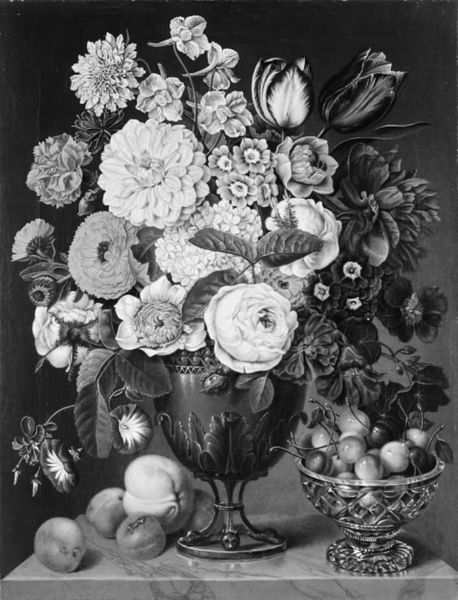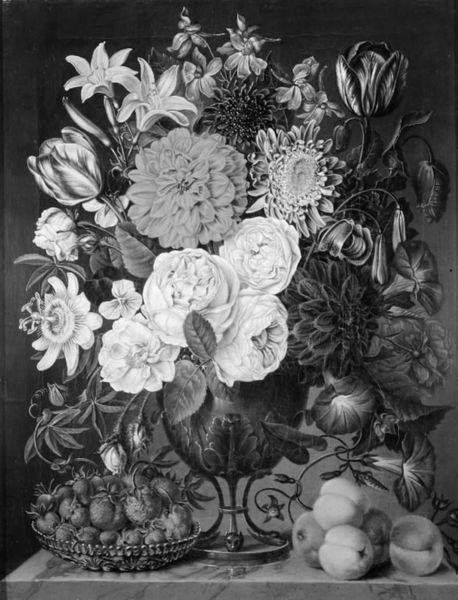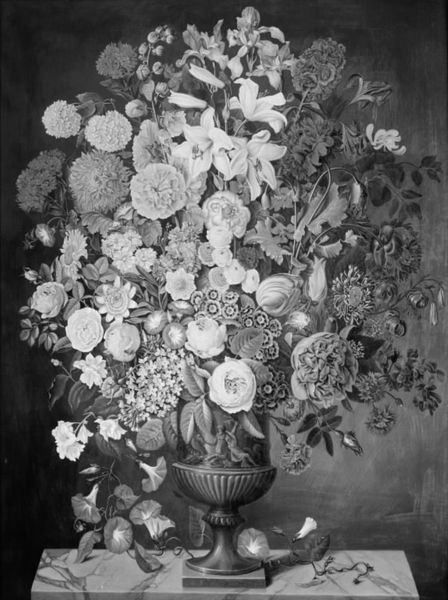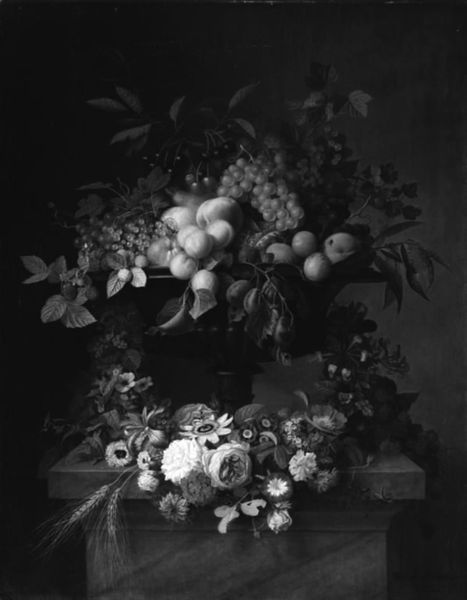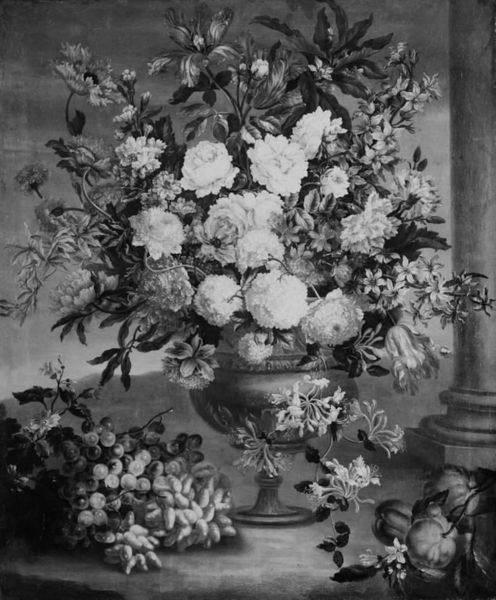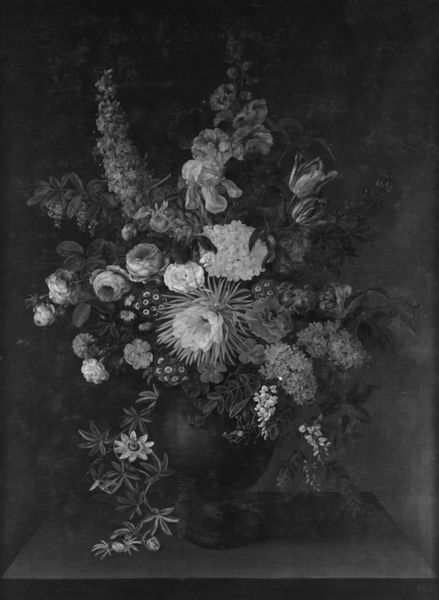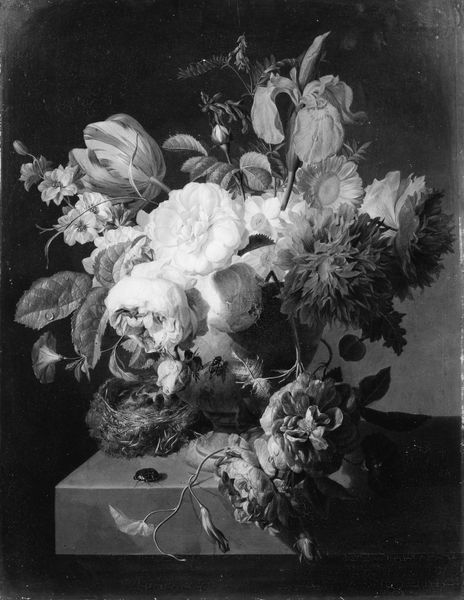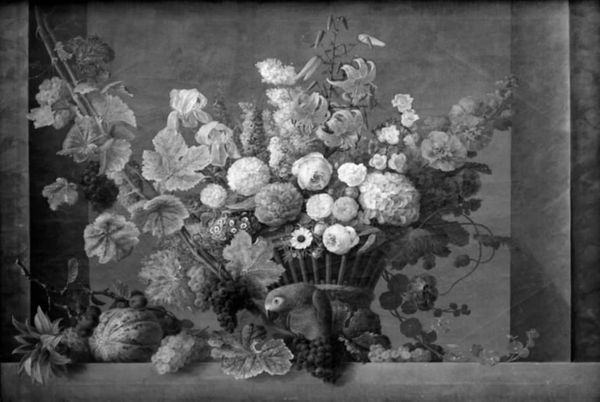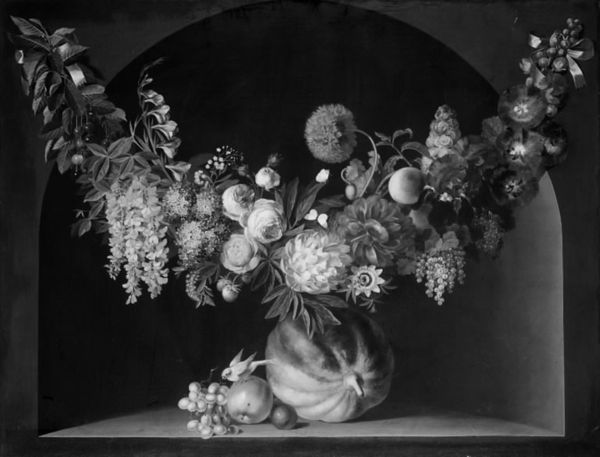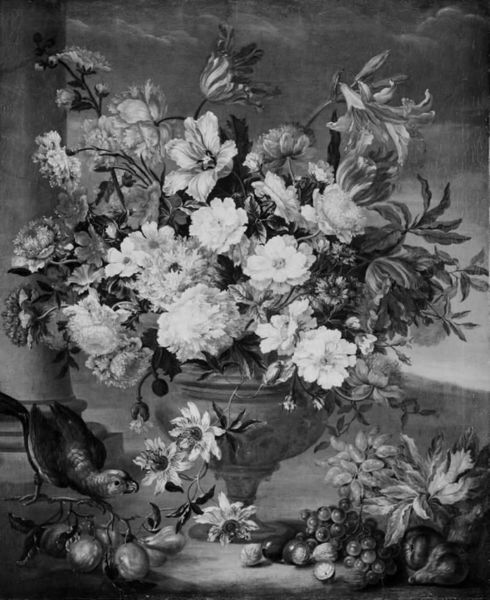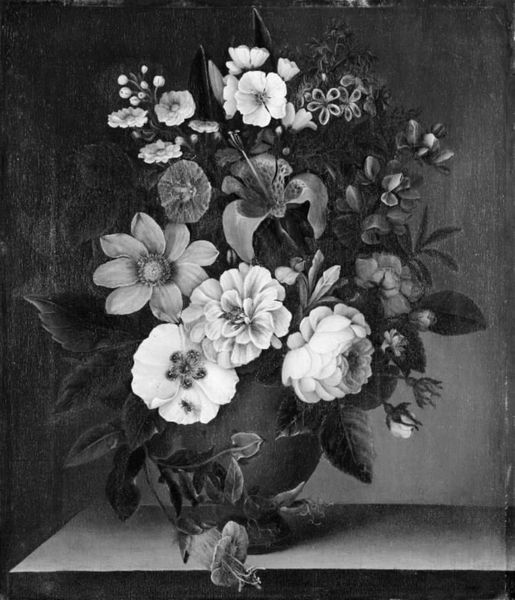
Blomster i en vase omgivet af frugter 1792 - 1837
0:00
0:00
tempera, painting
#
tempera
#
painting
#
sculpture
#
landscape
#
romanticism
#
realism
Dimensions: 65.5 cm (height) x 52.5 cm (width) (Netto)
Curator: Before us, we have “Flowers in a Vase Surrounded by Fruit,” an intriguing tempera painting by Carl Christian Seydewitz, created sometime between 1792 and 1837. Editor: It immediately strikes me as a composition steeped in Romantic ideals—an intense exploration of nature's beauty. But there is a distinct tension with elements that signal the inevitable decay after bloom. Curator: Indeed. What fascinates me is the physicality of Seydewitz's method, this dance with tempera, where each layer builds upon the last, revealing the tangible effort of creating such meticulously rendered forms. What does it say about the perceived value and material accessibility of floral painting during this period? Editor: I agree. These lush flower and fruit paintings became extremely popular during the 18th and 19th centuries, which corresponds with the growing consumer market and trade of the time. The symbolism within such still life arrangements—roses representing love, perhaps the grapes for abundance—must also be read against this shifting socio-economic backdrop. How do the blooms and ripened fruit relate to ideas of gendered spaces and class in Danish society at the time? Curator: That connection to gender and class opens an interesting line of inquiry, given the painstaking labor required. Consider the artist's studio, his tools, the trade routes supplying materials like tempera and pigments - what hidden economic and human systems do these seemingly peaceful fruits of labor depend on? Editor: And what narratives are not pictured, outside of Seydewitz's carefully staged, abundant scenes? Which hands cultivated these specific species of flowers and fruit for noble patrons? Who couldn't afford it? What did they symbolize for other populations? Curator: It invites consideration, beyond surface admiration, to explore layers of extraction and economic networks intertwined with such luxury aesthetics, as still resonating today within visual consumption. Editor: Precisely! Even as it inspires contemplation on issues of nature and mortality. It makes you wonder—which systems enable what gets memorialized?
Comments
No comments
Be the first to comment and join the conversation on the ultimate creative platform.
